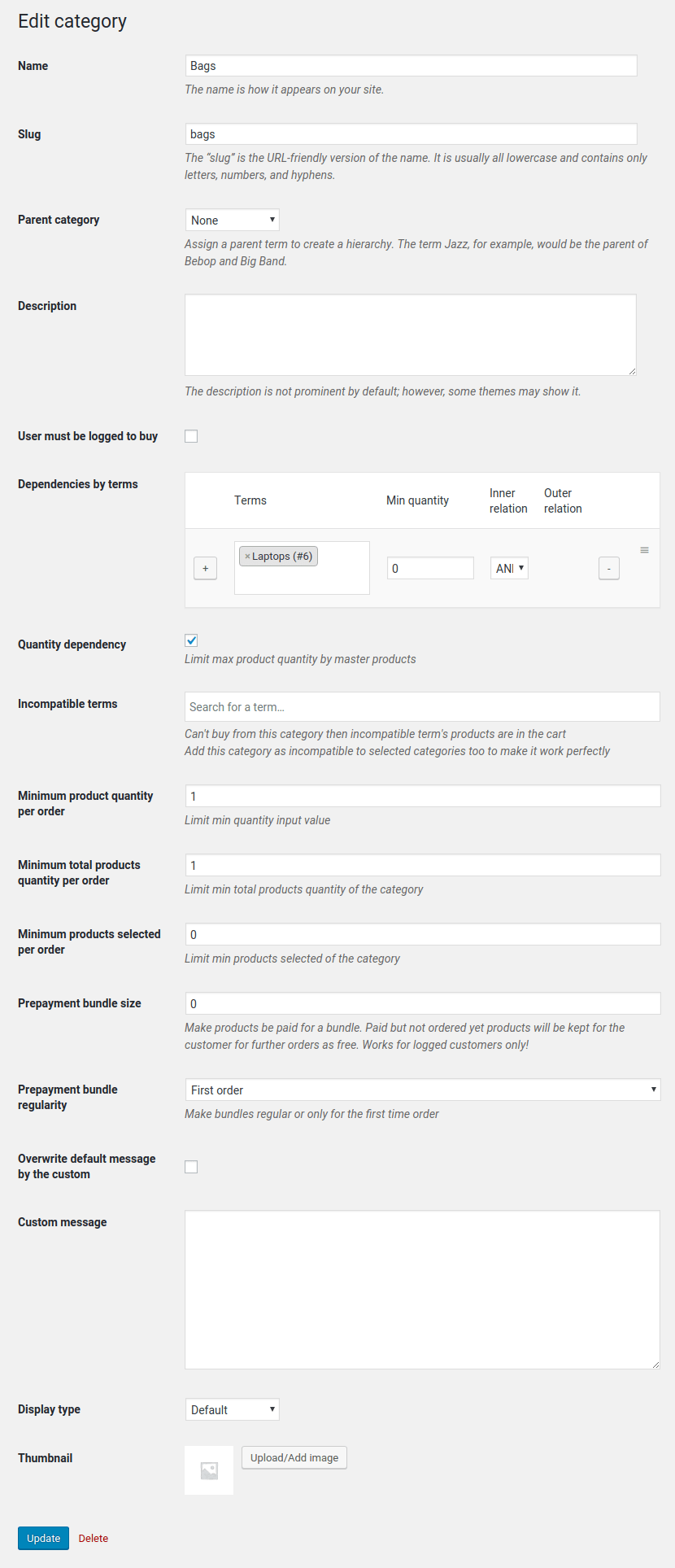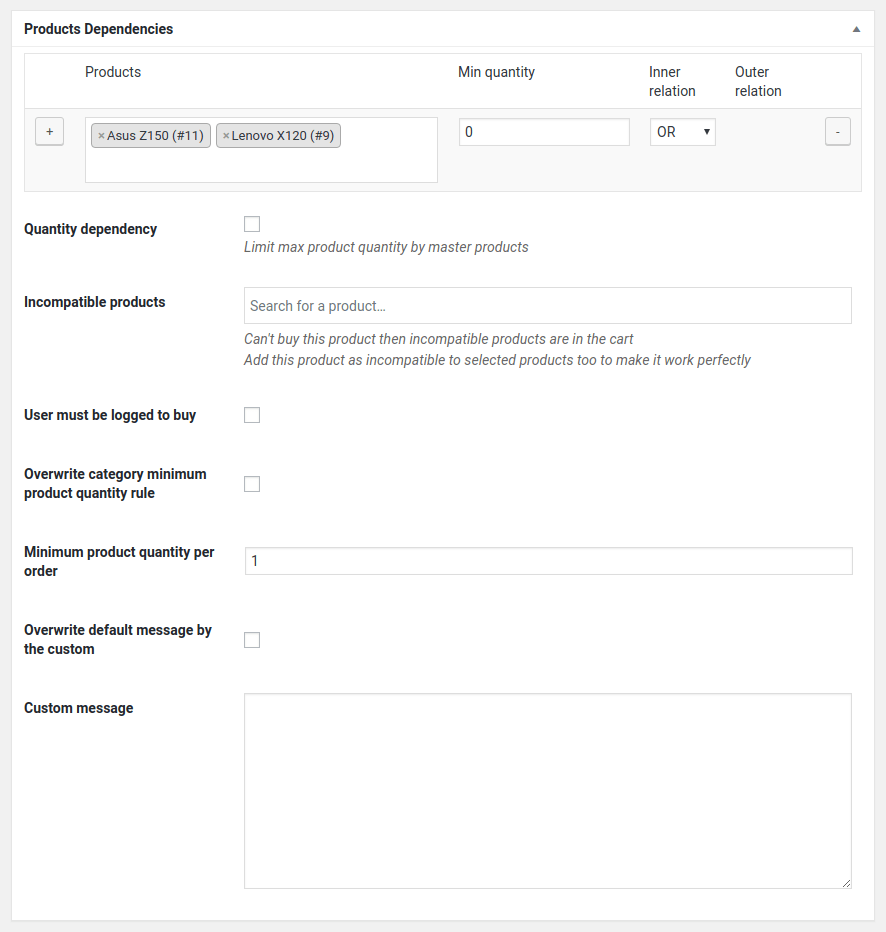C) Category Settings - top
1. If you want to sell products from this category only for logged users, then check
User must be logged to buy option.
2. The Dependencies by terms defines the main dependency rules. It can have multiple lines with
one or a few terms per each and different relations between these terms or with other rules.
Start to type a term's name in the Terms field to see the list of terms.
If you have selected a few terms then take a look at Inner relation setting -
if you want to make a dependency of any of them, then set the value to "OR", otherwise set it
to "AND" value.
If you have a few rule rows, then they will have Outer relation option except the last -
it allows to bond rule rows with "AND" or "OR" dependencies between each other.
3. If the Quantity dependency setting is checked then the user can't increase the quantity of
dependent category in the cart if there is not enough any of master category quantity.
4. Minimum product quantity per order defines the minimum quantity input value of a product then
it is added to the cart.
5. Minimum total products quantity per order defines the minimum count of category
items in the cart to make an order.
6. Minimum products selected per order defines the minimum products count of category
in the cart to make an order.
7. Prepayment bundle size option allows taking mandatory prepayment for defined product
quantity in a case if the user orders less than this quantity. However, he will be able to get left
product quantity as free in the next orders. To use this option user must be logged on the site
so take a look at the appropriate option.
8. Prepayment bundle regularity helps to define will the prepayment be taken only once for a
product or prepayment for a bundle will be always mandatory.
9. If you have really a lot of dependency rules, then you can overwrite default
generated message by custom using Overwrite default message by the custom and
Custom message options.



